Archived Storm Damage Blog Posts
Defend Your Home From a Lightning Strike | SERVPRO® of Biddeford-Saco
9/19/2022 (Permalink)
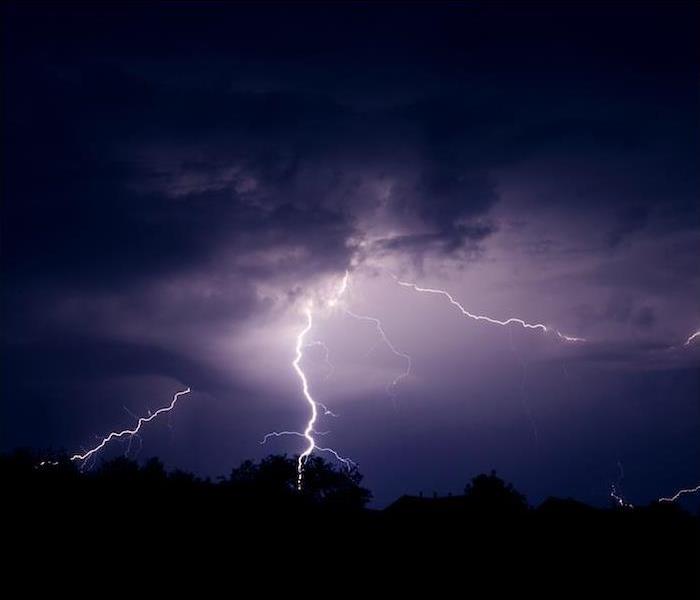 If you are dealing with smoke or fire damage from a recent fire, call SERVPRO of Biddeford-Saco to learn about a restoration solution for your issue.
If you are dealing with smoke or fire damage from a recent fire, call SERVPRO of Biddeford-Saco to learn about a restoration solution for your issue.
Many household fires are avoidable, and with fire safety tools, you can ensure the safety of your whole family. But although many house fires are typically started in places like the kitchen, there are other natural threats that could affect your home and be more difficult to prevent.
More than 70,000 damage claims resulting from lightning strikes were made in 2020. While it is actually quite uncommon for a person to be struck by lightning, your property is considerably more vulnerable. And when lightning does strike, it has the power to burn out your electricity, down trees and even ignite a fire.
Approximately 6,000 lightning strikes are thought to occur each minute. So, everyone is at risk of being affected by lightning, and we should all work to keep ourselves and our homes safe before severe weather strikes.
What Is Lightning?Lightning is an enormous flash of electrical current that happens between clouds in the air and the ground. Lightning is usually present in thunderstorms, but it can also happen during a volcanic eruption, severe wildfires or even a significant snowstorm.
We typically relate lightning to severe weather, but it can even strike when the sky is clear and the air is dry. “Dry lightning” occurs without rain, and it’s capable of creating flames that result in wildfires. That means we should not only prepare for storms but also for the risk of flames as well.
Protecting Your Home From Lightning FiresYour home may sustain significant damage from a lightning strike, including flames. The warmth of the impact itself or an electrical surge brought on by the impact both have the potential to ignite a fire.
When flames are started after a strike, you might not notice them right away since lightning-related fire will often erupt up in your attic or between your walls. Check for scorching after the strike, and notify the fire department as soon as you spot black markings or smell smoke.
One of the most effective strategies to avoid lightning-related fire is to install a lightning rod. This is a metal pole that can direct the power of a lightning strike away from your house so that it is not directly affected by the temperature and electrical charge of the hit.
When Lightning Strikes NearbyLighting is a typical cause of wildfires and many other outdoor fires. There are several “peak” seasons for lightning fires in various regions of the country, but on average, 9,000 fires are ignited by lightning strikes each year.
Maintain a tidy yard free of dead or dying plants, and think about utilizing defensible zones to shield your house from close lightning strikes. Your home should also include smoke detectors on every level to be aware of any flames as soon as a fire starts.
If your home suffers from a fire, call our team at SERVPRO immediately.
Fire restoration can be an overwhelming task, but our years of experience and advanced technologies allow us to make the whole process quick and easy. We can return your fire-damaged home to its pre-disaster state as fast as we can.
Have you experienced smoke or fire damage in your home? Call us today to get the restoration finished fast.
The 3 Common Kinds of Storm Damage | SERVPRO® of Biddeford-Saco
8/18/2022 (Permalink)
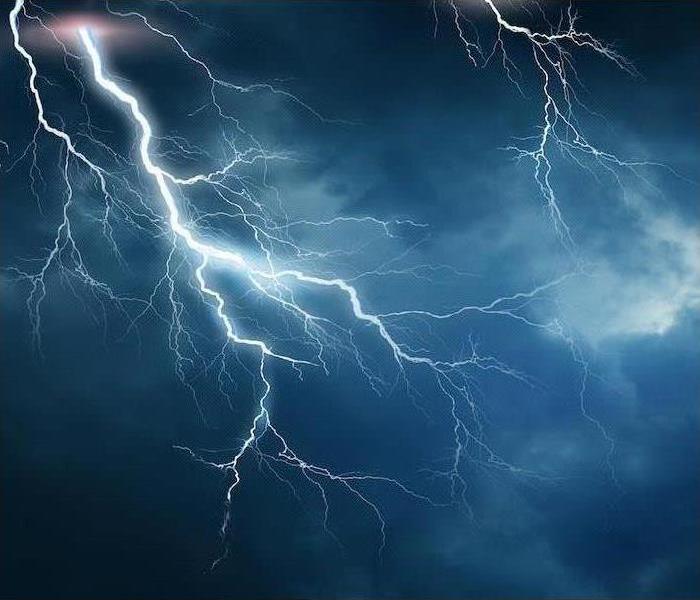 When you suffer storm-related damage to your home or business, make SERVPRO of Biddeford-Saco your first call.
When you suffer storm-related damage to your home or business, make SERVPRO of Biddeford-Saco your first call.
Severe weather can be a disaster for homeowners. Many properties are built to endure the hazards brought on by a severe storm, but practically every property will sustain some level of damage when severe weather strikes.
Strong wind and wind-related disasters can send debris flying and create heavy rain, snowstorms, tornadoes, floods and lighting, depending on the time of year and type of storm. All create hazards to your property’s structural integrity.
Depending on the kind of storm and hazards created, your house could sustain varying degrees of damage. The landscape around your home, the geography of the area and the strength of your home’s foundation or building materials all play a role in determining the extent of potential damage. (We admit that there is an amount of chance involved.)
While it’s smart to understand all kinds of storm damage that could strike your area, Biddeford is at risk of weather like strong winds, snowstorms and floods.
It is never smart to remain in a storm-damaged home unless safety experts have authorized you to do so. Many kinds of damage will be obvious right away, but you must always follow established procedures to avoid more calamity.
Let’s go over the three primary types of storm damage so you can be better equipped for them:
Wind
When buildings are subjected to powerful gusts of wind at extraordinarily high speeds, this kind of devastation follows. Tornadoes and hurricanes are the most frequent causes of high winds; however, even thunderstorms can produce gusts of up to 100 mph.
Wind gusts might throw debris from your yard into your vehicles or home. When a storm approaches, it is critical to remain indoors and away from any windows or external walls in case glass shatters or the walls are pierced by debris.
You can also take precautions before severe storms to avoid excessive wind damage. Keep your yard clear of any branches, large boulders, unsecured furniture or dying trees so that a storm has less debris to throw around.
Water
Water damage is a regular occurrence during and before a storm. Even a small storm can produce heavy rains that collect outside your home, permitting water to leak through cracks in your doors and windows.
Water can also soak into your foundation and create significant structural damage if the amount is large enough.
Consider using strategic landscaping methods that allow water to flow away from your property rather than gather next to it to decrease the amount of harm that water can cause to your home. Alternatively, you can build a rain garden, which is a lovely way to enliven your yard and keep all that rainwater from becoming a major issue.
Furthermore, you must always maintain your gutters so that they can function properly and keep rainwater off of your roof. Clogged gutters can get backed up and leak down to the ground and force its way inside your property from the top.
Impact
Another prevalent form of storm damage that can have disastrous consequences for your home is “impact damage.” This damage presents itself as downed trees or debris being thrown into your home by heavy winds. It’s generally whatever makes an impact with your home or items on your land.
The best and most effective approach to prevent this type of devastation is to trim trees surrounding your property and ensure that any decaying trees are removed after severe weather sends them to fall on your home.
Weather-related calamities cost more than $145 billion in losses in the United States alone by 2021. These suggestions will help you save a lot of time and money, as well as protect your family by preventing these common calamities from happening in the first place.
If a storm impacts your home, contact SERVPRO of Biddeford-Saco straight away. Our restoration specialists are prepared to reverse any damage with industry-leading technology and years of expertise dealing with all types of disasters.
When you suffer storm-related damage to your home or business, it’s important that you know who to call! Contact us today to get your storm damage restoration started faster.
Learn About the Many Types of Weather Alerts to Stay Safe | SERVPRO® of Biddeford-Saco
7/12/2022 (Permalink)
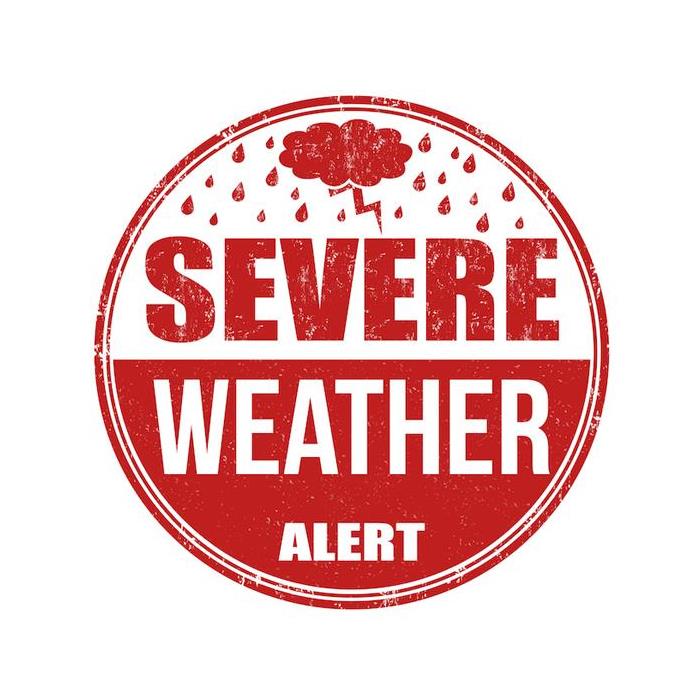 If you suspect any damage to your home from a recent storm, call SERVPRO of Biddeford-Saco.
If you suspect any damage to your home from a recent storm, call SERVPRO of Biddeford-Saco.
There are multiple types of weather warnings, around 42 different kinds to be precise! Each is grouped into seven different weather-related categories. That’s a lot to process, especially in the middle of a severe weather situation.
Learning what each of these warnings and advisories could mean for your hometown can help better prepare you and your family for severe weather. You’ll also be able to safeguard your property from any severe weather hazards that could impact it.
While it’s good to have general knowledge of all kinds of weather conditions, it is even more important to be aware of what kind of weather may strike your community.
How Alerts Are IssuedSo, what influences the issuing of these warnings? Since weather forecasts are only predictions, how is the severity, duration and location of a storm monitored? A number of factors impact the issuing of these warnings.
The National Weather Service is in charge of weather forecasting and sending out any required alerts. There are six regional offices located throughout the country to allow these alerts to be localized. Biddeford’s alerts are issued out from the Eastern Region headquarters in Bohemia, New York.
Meteorologists and other workers with the NWS use all sorts of information to develop these forecasts, including satellite radar, ocean buoys, weather balloons and even solar activity. The type of data used varies depending on the weather conditions, but the aim is to be as precise and thorough as possible.
The Most Important Alerts to UnderstandUnderstanding the distinction between a “watch” and a “warning” is essential to interpreting these notices. This wording is used in almost all weather alerts, including those for thunderstorms, tornadoes and flooding.
A watch means a storm is developing and could possibly strike down in your area. Watches are sent out in a larger area, while a warning is issued in smaller places, like a county or city. A warning means a strong storm is approaching and you should prepare your home to survive these dangerous conditions.
Identifying the weather conditions your neighborhood faces regularly can help you better decipher the alerts that could be issued during severe weather. For example, Maine is a coastal state, so conditions like heavy fog and hurricanes occasionally impact the area. Alerts are sent out as soon as possible when these weather threats worsen near your Biddeford home.
Protecting Your Home During a StormBeing able to interpret these alerts is a surefire way to protect yourself and your home from any weather conditions, but there are a few other safeguards you can put in place right now to help reduce the damage.
Clear your gutters of debris and secure any outdoor furniture to protect your property from conditions such as strong winds or severe flooding. Locate a safe place to shelter with supplies and have an exit plan prepared in the event of an emergency evacuation.
If your property has been damaged by severe weather, call on our team at SERVPRO. We are prepared to repair any damage your home may have suffered and can keep you updated every step of the way.
The more you understand the many weather scenarios your area may face, the more prepared you’ll be when severe weather is on its way. Understand the many different kinds of warnings that could be issued in your area so you and your home can weather any storm!
Experienced storm damage to your home or property? Contact us today for a quick response!
Creating a Storm Safety Plan
5/19/2022 (Permalink)
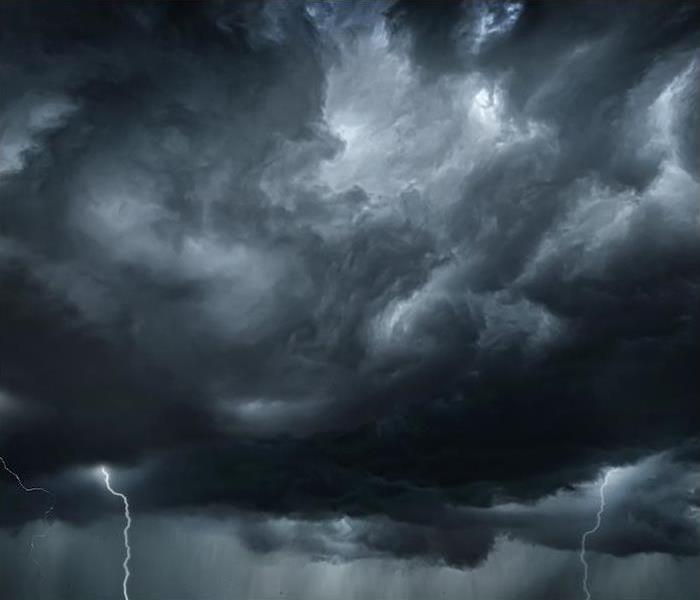 If you discover storm damage to your home or business, reach out to SERVPRO of Biddeford-Saco right away.
If you discover storm damage to your home or business, reach out to SERVPRO of Biddeford-Saco right away.
Severe weather can create dangerous conditions and cause serious damage to homes and infrastructure. Weather-related damages often result in financial consequences. In 2021, the United States spent at least $1 billion dollars in weather-related damage, showing just how expensive storm devastation can get.
Here in Maine, natural disasters such as floods, fires, earthquakes, and tornadoes are likely to occur. It is essential to understand which types of natural disasters are more likely to strike in our region to understand how to best prepare for them.
Storms can pose a real threat to your safety and wallet, and though we can’t control the weather, we can learn ways to better prepare for storms when they do occur. Having a storm safety plan in place is one way to take action against inclement weather.
Have a Communication Plan
When a storm hits, it is important to have a communication plan in place for all residents of your household or business. Communication plans with emergency phone numbers, highlighted evacuation routes and shelter information can be an important tool to use in case of a weather-related emergency.
Consider planning a designated “safe space” in your home or office for sheltering against inclement weather and a check-in procedure for parties to report when they are out of harm’s way.
Have an Emergency Kit Ready
Emergency kits are an essential item to have on hand in the event of a storm. Pack your emergency kit with essential materials, such as water, nonperishable food items, a first-aid kit, working flashlights and backup batteries. Make sure your emergency kit is in an area that will be easily accessible from your place of shelter.
Prepare Your Home
It is important to reduce the potential for avertable damages by taking steps to prepare your home or business for a storm. Start by sealing windows and doors and checking the exterior of your building for loose items that could blow away in the storm.
Next, check that your roof and gutters are in good working condition and free of leaks. It can also be helpful to add DIY storm shutters to protect from rain and high winds.
In case damage does occur, it is important to know who to contact for help. With a trustworthy team of skilled restoration technicians, SERVPRO of Biddeford-Saco has your back. We’re on standby 24⁄7, ready to get your home back to “Like it never even happened.”
Finally, set aside time to put together a storm safety plan for your home or office. Round up any necessary items, update your communication plans and be prepared for the next time a storm hits.
If you discover storm damage to your home or business, you can count on SERVPRO to handle the restoration. We’re here 24⁄7 to spring into action—get in touch with us today.
3 Types of Floods & the 4 Main Things That Cause Them | SERVPRO® of Biddeford-Saco
4/5/2022 (Permalink)
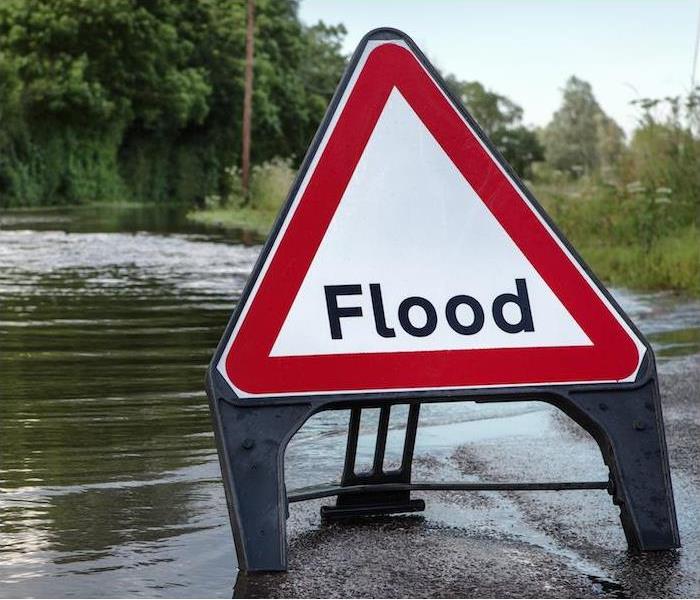 Regardless of the cause of the flooding, SERVPRO of Biddeford-Saco has the team to help you recover from any disastrous event.
Regardless of the cause of the flooding, SERVPRO of Biddeford-Saco has the team to help you recover from any disastrous event.
Flooding is the most common natural disaster, and it claims more lives in the United States each year than hurricanes, tornadoes or lightning. It can affect everything from individual homes where property collects excess water to wide swaths of communities and cities.
Flooding affects all 50 states and every U.S. territory, but there are similarities in types and causality among all them. There are three common types of flooding, and they happen for four typical reasons.
3 Types of Natural FloodingFlash floods are common, and they happen when heavy rain passes or sits over an area and overwhelms the ability of the ground to contain the moisture. Excess water runs off and takes garbage cans, cars and more with it.
River floods are exactly what they sound like. When there’s too much water for a river’s banks to hold, the water spills over the sides and causes destruction.
Coastal floods happen in areas next to large bodies of water, when storm surges or cyclonic activity causes ocean or gulf levels to rise to flood levels.
The 4 Most Common Causes of Natural FloodingHeavy rainfall. Storms with excessive rainfall, or storms that sit and rest over an area for an extended period can cause flash floods or river flooding. Urban areas are more at risk for rain floods, because the higher percentage of concrete and asphalt means there’s a lack of soil to soak up all that water.
Oceanic activity. Storm surges, hurricanes and rising tides can cause water levels to rise in waves, which can invade coastal communities and wreak havoc.
Dams and levees failing. The most notable example of this in recent history would be the disastrous levee breaks during 2005’s Hurricane Katrina. Levees and dams fail when cracks occur or excess pressure overtakes the dam’s ability to contain the surge of water behind it.
Snowmelts and ice dams. In areas of the country where heavy snow and prolonged freezing temperatures are common, snow and ice can build up over a winter’s time, and when they start to melt, they cause rivers of water to flow through area communities. Ice dams or ice jams happen when rivers become blocked by built-up ice being carried downstream, causing the banks to overflow.
Regardless of the cause of the flooding, SERVPRO has the tools and teams to help your home or business recover from its disastrous effects. Contact us anytime when flooding or water damage makes a mess in your life.
Spring Brings a Variety of Storms and Weather Hazards | SERVPRO® of Biddeford-Saco
3/4/2022 (Permalink)
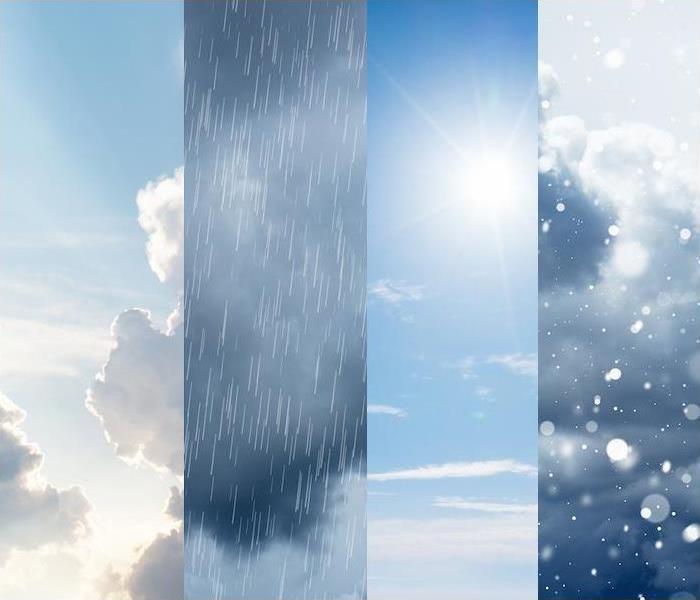 Extreme temperature changes can lead to the possibility of severe weather. SERVPRO of Biddeford-Saco is a click away if you experience any damage.
Extreme temperature changes can lead to the possibility of severe weather. SERVPRO of Biddeford-Saco is a click away if you experience any damage.
The United States is among the largest nations in the world, second only to Russia and Canada in total size (though China is also larger if you don’t count all outlying U.S. territories).
Having a territory this big under one umbrella means seasonal weather isn’t a monolith—different areas of the country experience different weather patterns, and thus different weather threats, to varying degrees across a year’s span.
As spring nears and warm and cold air masses collide all over the nation, let’s take an overview of what distinct weather events can be expected in a few large regions, and specifically, what we have to keep in mind here in York County.
The Pacific Northwest is prone to heavy rain over the spring months, which can cause flooding and water damage issues to area residents. Higher elevations will still be dealing with snow as well, and the melting and runoff from that can cause problems of its own.
In the Upper Midwest and also here in the Northeast regions, we have the longest continuation of winter’s chill, and cold weather will hang on fully throughout the season.
Specifically, here in Maine, heat and cold waves, droughts, severe rainstorms, nor’easters, ice storms, and tornadoes are all part of Maine’s normal climate throughout the year. Residents from here in Maine to the Dakotas can expect extreme cold and the possibility of snowstorms and blizzards until late spring or even early summer brings temperatures up.
Conversely, the southern West Coast will have to look out for excessive heat waves that can endanger lives and safety, and the South Pacific, including Hawaii, will be on alert for possible tsunamis caused by tectonic activity.
The middle of the country from Iowa to Texas will need to watch out for windstorms, derechos and the risk of wildfires, which are easily spread when winds are high and seasons are dry. And of course much of this area comprises Tornado Alley, in which a high concentration of tornadoes occur.
Finally, the Southeast may experience a range of severe weather, from tornadoes and severe thunderstorms in the landlocked states to dangerous rip currents, plus early-season hurricanes later in the spring.
Regardless of where you live, the threat of extreme weather in the U.S. is real. Yours may vary from your friend’s a few states over, but it always pays to know the times and stay ready.
If extreme weather leaves you with damage from water, fire or other elements, help is a click away. Contact SERVPRO for fast, expert recovery.
Spring Rain Brings Damage
6/9/2021 (Permalink)
Springtime always seems to bring plenty of rain and plenty of rain always brings a higher risk of water damage to your home. The following are the most common causes of springtime water damage.
Roof Leaks
With the increased showers as well as high winds, roof damage can happen or be revealed as water seeps through your roof and damages your ceilings and walls. To reduce the risk of roof leaks, you should inspect your roof for any damages from the winter and inspect it after every major storm.
The most common cause of roof leaks is a damaged or missing shingle from storms or fallen branches. If you do experience water damage inside your home from the ceiling or wall, you will want to contact a professional from SERVPRO of Biddeford-Saco to inspect the damage, remove the water, and remediate the damage.
Window & Door Leaks
Another common source of water damage is from old or damaged windows. Water especially from a huge storm can blow into cracks and crevices around your window causing water damage that may not be discovered quickly allowing mold to develop and cause further damage.
Make sure to inspect around your windows and doors for cracks or old caulking that has peeled or cracked off. You can usually caulk any small cracks or crevices to ensure water doesn’t seep into your home causing damage.
Broken Sump Pump
If you have a basement, you understand the importance of a sump pump. Without one, water can seep into your basement and cause lots of damage. One of the most common causes of a flooded basement is a sump pump that stopped working.
To prevent this from happening, you can do three things.
- You can get a backup battery for your sump in case the power goes out.
- You can get a backup sump pump that is usually set to come on if the water rises above the normal level for your working sump pump.
- You can install a water sensor alarm on the floor near the sump pump. While you may still have some water damage, at least you will be able to catch it fast and have SERVPRO of Biddeford-Saco professionals come out to pump out the water and dry out your basement.
Foundation Cracks
If the foundation around the base of your home and the basement walls cracks, water can seep into the basement or crawl space. A sump pump won’t help you since the water is seeping through the walls as opposed to being channeled to the sump pump.
Usually, people discover foundation cracks after a big storm or when a gutter is clogged and the water is falling right by your house. Repairing foundation cracks can be a very expensive job depending on the situation but without the repair, there is no way to prevent the water leaking into your basement or crawlspace.
It never hurts to walk around the perimeter of your home checking for any potential foundation cracks as well as checking any bare walls in your basement and/or crawlspace.
Call the Pros of SERVPRO Biddeford-Saco for Water Damage This Spring
If you should suffer water damage whether from Spring weather or a cracked pipe or an overflowing bathtub or toilet, call the water damage cleanup experts at SERVPRO of Biddeford-Saco at (207)-283-4428 for 24-hour emergency service.
Why Choose SERVPRO of Biddeford-Saco?
At SERVPRO of Biddeford-Saco, we have specialized equipment, professional training, and certifications that allow us to restore your home to its pre-water damage condition.
Should winter snowstorms get you worried for your home?
12/18/2020 (Permalink)
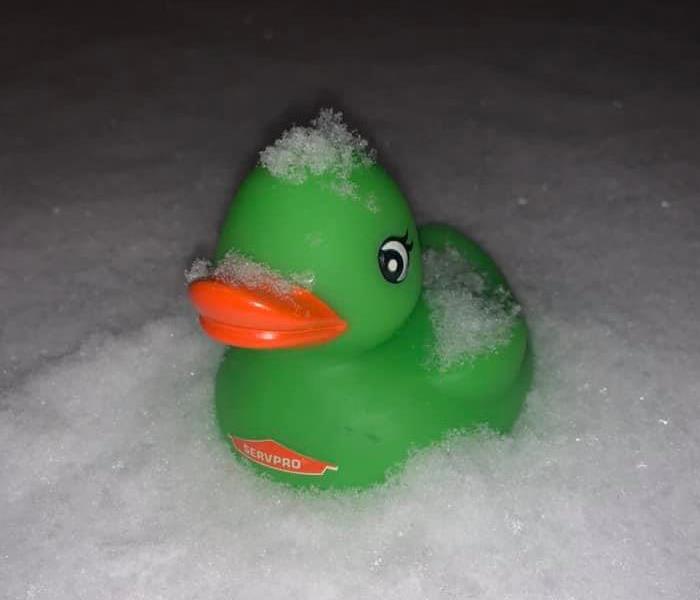 Squeegee enjoying the snow after checking his preparation list!
Squeegee enjoying the snow after checking his preparation list!
Fear not but be prepared! Living in Maine, you can expect the heavy winters we endeavor each year. We should be prepared to eliminate any chances of disasters arising.
Specifically, during the rainy and snow season we should be careful. Ice and snow from a big winter storm can cause monumental damage to a home or commercial building. Water can seep in through windows, under doors and even heavy snow that is not cleared can cause a roof to cave in.
Ensure you have an operating generator ready to go or even connected to critical systems such as refrigeration and any heating systems to prevent pipes from freezing and bursting. It is wise to arrange for quick removal of snow from any lots, driveways, the roof and any decks. This will prevent and avoid quick melts from turning into flooding.
When your home is hit by a storm, remember the we, SERVPRO of Biddeford-Saco and The Sebago Lakes Region is here to restore your home to its pre-storm condition making any damage “Like it never even happened.”
Prepare Your Home for Winter
11/10/2020 (Permalink)
As colder weather is approaching quickly here in New England, we want to ensure you receive tips to prepare your homes and commercial buildings for the winter ahead. Water damage due to freezing pipes or melting snow doesn’t sound like the gift we all want.
Key Tips
-Make a family communication plan for everyone residing in the home. It is important to know how you will contact one another if disaster strikes. You will want a premeditated plan on how you will get back together in case of an emergency.
-Keep a space heater safety in mind. Ensure they remain at least 3 feet away from all furniture and drapes or anything that could cause a fire.
-Create an emergency kit for at least three days of supply.
Preparing Your Home
-Ensure your home is well insulated including weather stripping around doors and windows to ensure the warm air doesn’t escape or cold air doesn’t enter.
-Ensure all fire alarm detectors and carbon monoxide detectors are working properly.
-Learn how to shut off water valves in the unfortunate events a pipe bursts and you need to stop the leak.
-Keep fire extinguishers on hand. With alternate heating sources typically being turned too during the cold months it poses a higher risk for fires.
-Have a prepared emergency kit including extra heat sources in case of a power outage
-Extra blankets, sleeping bags, coats,
-Gas log fireplace, dry firewood, alternative heating source
-Cell phone with an emergency charging option
We hope these tips will help you be prepared for the cold winter days ahead. SERVPRO of Biddeford-Saco and The Sebago Lakes Region is here to keep you as safe as possible!
Preparing for Severe Weather
10/19/2020 (Permalink)
Starting a Severe Weather Preparedness Plan
It is time to start planning for the severe weather here in Maine. Although it is tough to predict the incoming weather, we always encourage having an emergency plan in place. Keeping your valued home and/or business protected is crucial. Here a few tips to be prepared for severe weather:
- Create a Communications Plan. Everyone residing at the home or working at the business should be aware of an emergency plan if something were to happen. It’ll be important to have a communications plan to map out what to do in case someone is out. Don’t forget to think about any animals or pets to ensure someone is in the charge of helping them get to safety as well.
- Prepare the home or business as much as possible. Reduce any chances of preventable damages. Cut back any dead or loose tree limbs. Secure patio furniture and any other potential projectiles. Having prepared a generator for the home or business can help maintain operations longer.
- Make sure emergency kits are stocked. Emergency kits can come in handy during and after a storm or power outage. Ensure the kits are packed and stocked with supplies. Ensuring there is enough food and water, medical supplies can become vital in times of a storm.
- Consider keeping up to date with weather. Although many of us use our phones and the internet for weather updates, it’s advised to obtain a weather radio. In times of severe weather which causes power outage. You will want to ensure a back up telecommunications device in case your phone dies.
At SERVPRO of Biddeford-Saco and the Sebago Lakes Region we are committed to being there 24 hours 7 days a week for our customers and through any storm. We dedicated our business to serving you and any unfortunate disasters that arise.
How to Prepare & Check for Frozen Pipes
12/5/2019 (Permalink)
Preparation & Protect
-Be sure to insulate all accessible pipes. Reach out to your local hardware store for recommendations on what insulation is appropriate for your home and the colder temperatures.
-Use a sealant or caulk to seal up any cracks and holes on your homes outside walls.
-Let your faucet drip cold water. This allows for continuous movement which relieves pressure on the pipes.
-Keep all doors and garage doors closed, especially if there a known water supply line inside.
How to Check
You can check the status of your pipes by turning on the faucet. It the water flow is only a trickle of water or even nothing coming out at all, then you suspect a frozen pipe. Typically, the freezing occurs near an exterior wall or where the water supply enters the home. Try leaving the faucet on and use a blow dryer to help heat the pipe until there’s a steady flow of water. We advise to call a plumber if you are uncomfortable doing this or if the issue continues to present itself.
Keep us in mind this winter if you experience bursting pipes. Save on expensive repairs and contact SERVPRO of Biddeford-Saco & The Sebago Lake Region to help you with water damage restoration 24/7. Keep yourself and your pipes warm this winter!
How to Handle a Storm
10/24/2019 (Permalink)
How to Plan for a Disaster or Storm
No one likes to think about the possibility of a long-term power outage however our power grids are more delicate than we think. It can be scary and a bit overwhelming when you know a storm is coming. Making sure your insurance is adequate is an important concept to think about before any storm hits and not wait until after! Learn where your safety shut offs are including power, gas and water ask us about our free Emergency Ready Plan service! Remove any tree branches or other dangers close to your home. Check your roof and gutters to make sure they are clear of any extra brush.
A preparing checklist:
- Be aware of the local weather alerts
- Tuck away anything away that could blow away or become loose due to high winds to a secure safe place
- Create an emergency plan: know where to go or where to stay & write down emergency phone numbers, SERVPRO of Biddeford – Saco is here for you!
- Prepare an emergency kit including plenty of water, non-perishable foods, flashlights, batteries, blankets and a First Aid Kit.
What to Do After Storm Damage
There are many important steps to take to be sure your home is safe. The cleanup and storm restoration process can involve:
- Assess the damage
- Document and take photos for which can be handy to send to your insurance company
- A visit from the insurance adjuster may be warranted
- Call SERVPRO of Biddeford – Saco!
How Do We Restore?
After a storm, there’s often water damage. What we do is remove the water from either the home or business. We then mitigate the damage by drying the area using our powerful equipment. We then remove any damaged materials if any. We finish by sanitizing the area and damaged materials are replaced.
What Happens to Damaged Items?
If you have damaged items due to the storm, you often wonder will I have to throw everything away. SERVPRO of Biddeford – Saco can often save items by mitigating. Items such as rugs, clothes, and other items made of cloth of fabric can be cleaned and restored if there is no presence of mold growth. In the unfortunate event, items can be restored they are often replaced!
We want you to be as prepared as possible for any kind of storm. So if you need restoration is can be as easy as possible!
When Storms or Floods hit York County, SERVPRO is ready!
2/14/2017 (Permalink)
 Our highly trained crews are ready to respond 24/7 to storm or flood damage in the Kennebunks and Biddeford-Saco region.
Our highly trained crews are ready to respond 24/7 to storm or flood damage in the Kennebunks and Biddeford-Saco region.
SERVPRO of Biddeford-Saco specializes in storm and flood damage restoration. Our crews are highly trained and we use specialized equipment to restore your property to its pre-storm condition.
Faster Response
Since we are locally owned and operated, we are able to respond quicker with the right resources, which is extremely important. A fast response lessens the damage, limits further damage, and reduces the restoration cost.
Resources to Handle Floods and Storms
When storms hit the York County area (including Kennebunk, Biddeford, Saco and surrounding towns), we can scale our resources to handle a large storm or flooding disaster. We can access equipment and personnel from a network of 1,650 Franchises across the country and elite Disaster Recovery Teams that are strategically located throughout the United States.
Have Storm or Flood Damage? Call Us Today 207-283-4428
 If you are dealing with smoke or fire damage from a recent fire, call SERVPRO of Biddeford-Saco to learn about a restoration solution for your issue.
If you are dealing with smoke or fire damage from a recent fire, call SERVPRO of Biddeford-Saco to learn about a restoration solution for your issue.

 24/7 Emergency Service
24/7 Emergency Service






